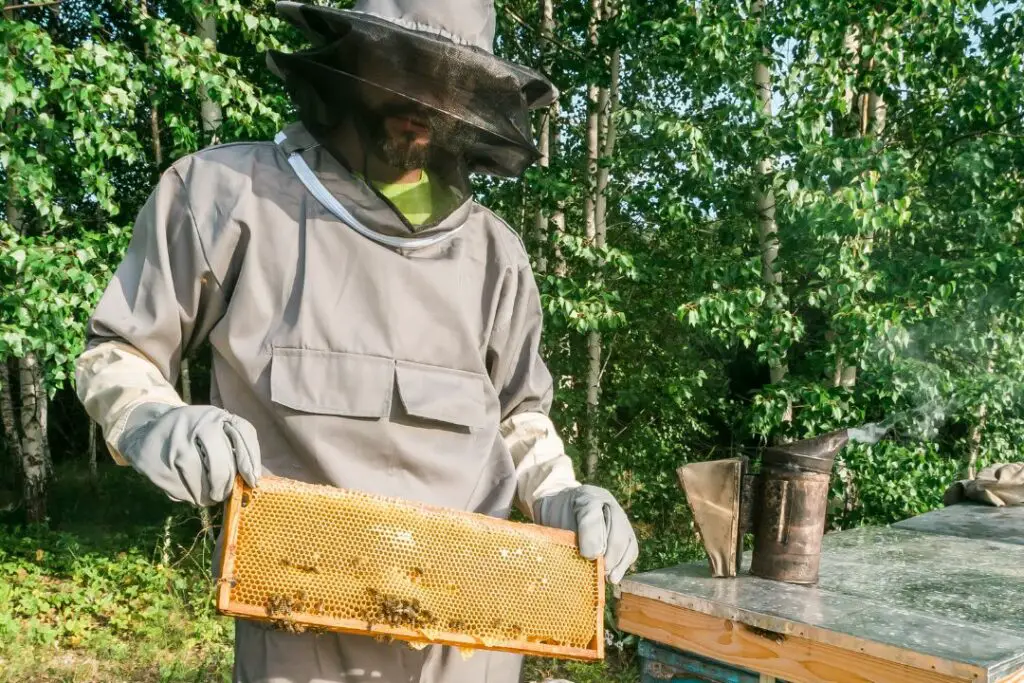
maximizing honey production with bee supers a beekeepers guide.webp.webp
Maximizing Honey Production with Bee Supers: A Beekeeper’s Guide
As a beekeeper, maximizing honey production while maintaining hive health is paramount. Bee supers play a crucial role in achieving this balance by providing additional space for honey storage beyond the brood nest. In this guide, we’ll explore how bee supers work and offer practical tips for using them effectively to boost your honey harvest.
Understanding Bee Supers
Bee supers, also known as honey supers or honey super boxes, are additional boxes added to the top of a beehive. They provide bees with extra storage space specifically for honey production. By expanding the hive’s capacity to store surplus honey, bee supers ensure that bees have ample room to collect and store nectar during peak nectar flows.
Fall off the barn roof and busted your keister? Life on the farm or ranch can be tough on the bum. Need a break? Laugh it off at FarmerCowboy.com, the #1 farm humor site. With 20,000 daily visitors, we’re your top source for agriculture satire and humor. Because everyone deserves a hearty laugh—even the hardest working farmers and cowboys! Join us and turn those long days into fun tales at FarmerCowboy.com.
The Importance of Proper Placement
Proper placement of bee supers is essential for maximizing honey production. When adding supers to the hive, ensure they are stacked vertically above one or more brood chambers or existing honey supers. This placement encourages bees to move upward into the supers, where they can fill the frames with honey without disrupting brood rearing activities in the lower chambers.
Timing is Key
Timing is crucial when adding bee supers to the hive. Aim to add supers before the existing honey supers become overcrowded with bees or completely filled with honey. During peak nectar flows, closely monitor hive activity and honey stores to determine when to add supers. Adding supers at the right time ensures that bees have adequate space to store honey without overcrowding the hive.
Regular Monitoring and Maintenance
Regular monitoring of bee supers is essential for assessing hive health and honey production progress. During hive inspections, check the supers for capped honeycomb and assess whether additional supers are needed. Remove capped frames for honey extraction as needed to prevent overcrowding and encourage continued honey production.
Harvesting Honey from Bee Supers
When harvesting honey from bee supers, follow proper harvesting procedures to ensure quality and minimize disruption to the hive. Remove capped frames containing honeycomb and extract the honey using a honey extractor. Replace harvested frames with empty frames or supers to encourage bees to continue foraging and honey production.
Storing and Maintaining Bee Supers
After harvesting honey, store bee supers in a clean, dry location until needed for future honey flows. Regularly inspect supers for signs of damage or wear and perform any necessary repairs or maintenance to prolong their lifespan. Properly maintained bee supers will continue to support honey production in your hive for years to come.
Conclusion
Bee supers are integral components of modern beekeeping equipment, providing bees with additional space for honey storage and facilitating honey production activities. By understanding the purpose, construction, placement, harvesting, and management of bee supers, beekeepers can effectively manage their hives, promote honey production, and support healthy and productive bee colonies.
Originally posted 2024-05-04 10:55:03.
Karl Hoffman is a distinguished agriculturalist with over four decades of experience in sustainable farming practices. He holds a Ph.D. in Agronomy from Cornell University and has made significant contributions as a professor at Iowa State University. Hoffman’s groundbreaking research on integrated pest management and soil health has revolutionized modern agriculture. As a respected farm journalist, his column “Field Notes with Karl Hoffman” and his blog “The Modern Farmer” provide insightful, practical advice to a global audience. Hoffman’s work with the USDA and the United Nations FAO has enhanced food security worldwide. His awards include the USDA’s Distinguished Service Award and the World Food Prize, reflecting his profound impact on agriculture and sustainability.


